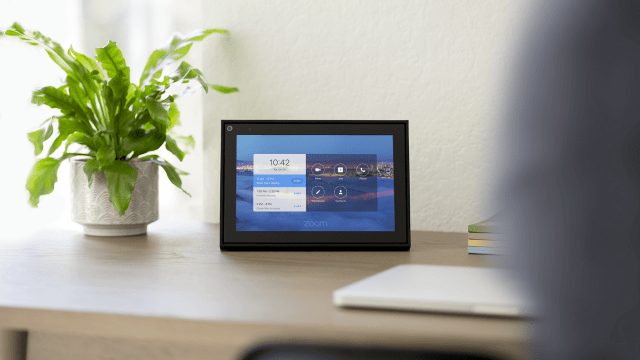Zoom is one of those programs that none of us are particularly fond of, but that we’re all kind of stuck with — especially if you’re one of the students or teachers that’s going to be stuck in remote-learning hell this coming semester. Now it looks like the platform’s about to become even more inescapable: earlier today, Zoom announced that support for its its video-conferencing app will be expanding to all sorts of smart home devices this coming spring, which means the horrific shenanigans we associate with the platform aren’t just going to be confined to our computers anymore, but to any screen we might have in the house.
The announcement name-drops three different smart displays that will be onboarding Zoom’s tech: Facebook Portal devices are getting it in September, while Amazon’s Echo Show and Google’s Nest Hub Max will catch up by the end of the year. And all of this is on top the new hardware that Zoom’s planning to roll out later this month, a roughly $830 tablet that comes with the program already baked.
While I haven’t been particularly quiet about how much I despise Zoom (and Facebook, and Google, and Amazon) in the past, I’m actually kind of relieved by this announcement. Yes, Zoom’s buggy as hell, not to mention a borderline national security issue — and yes, smart displays come packaged with their own buffet of privacy and security issues — but it’s a platform that kids across globe are going to be stuck relying on for the foreseeable future. And with the higher demand for remote-learning tech comes a higher demand for hardware.
Granted, part of the problem is that many low-income houses just don’t have an internet connection at all, but for those that can get over that hurdle, there’s still the second hurdle of affording a device to connect onto it. Laptops are being drained from store shelves at an unprecedented rate, with the cheapest devices being picked off first. When there’s only so many laptops to go around, a lot of kids from lower-income communities are being left without any way to go to school.
I’m not saying that a kid without a computer at home will just have a tablet device laying around, but I am saying that those tablet devices are usually cheaper. If you want to subject yourself to picking up a Facebook Portal, you can get one for a little over $140. Right now, Google’s selling its own Nest Hubs for just under $130. For someone that’s struggling with finances, either of these might be a more realistic buy then, say, a refurbished Chromebook that can easily run up a bill of $300 dollars or more.
Giving these families more options on more devices — even ones owned by the Facebooks and Googles of the world — is giving them a fighting chance to connect to a class. Holding our noses and trusting untrustworthy companies might be an unfortunate stopgap, but let’s hope it doesn’t become the permanent solution.
